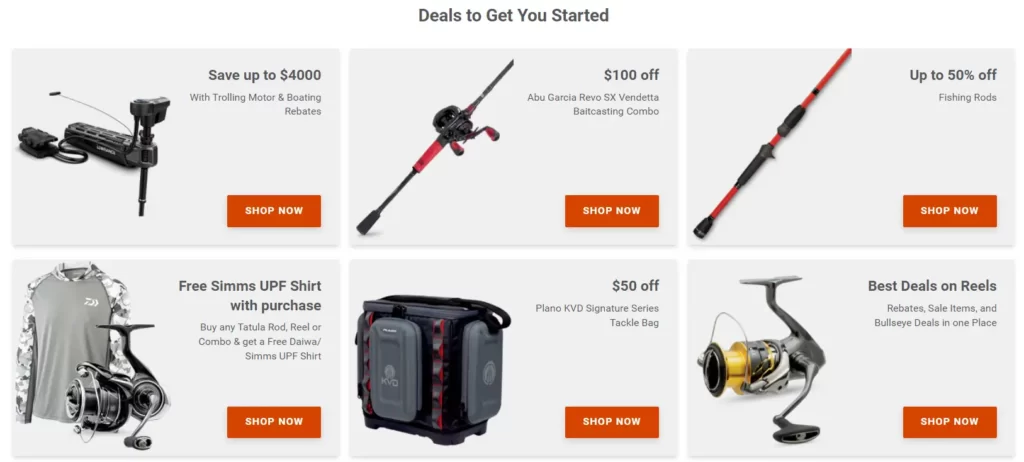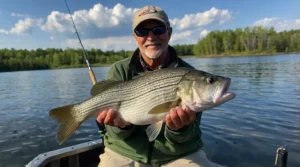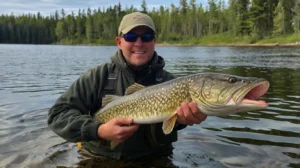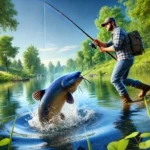Explore Canada's Ultimate Fishing, Hunting, and Wildlife Adventures
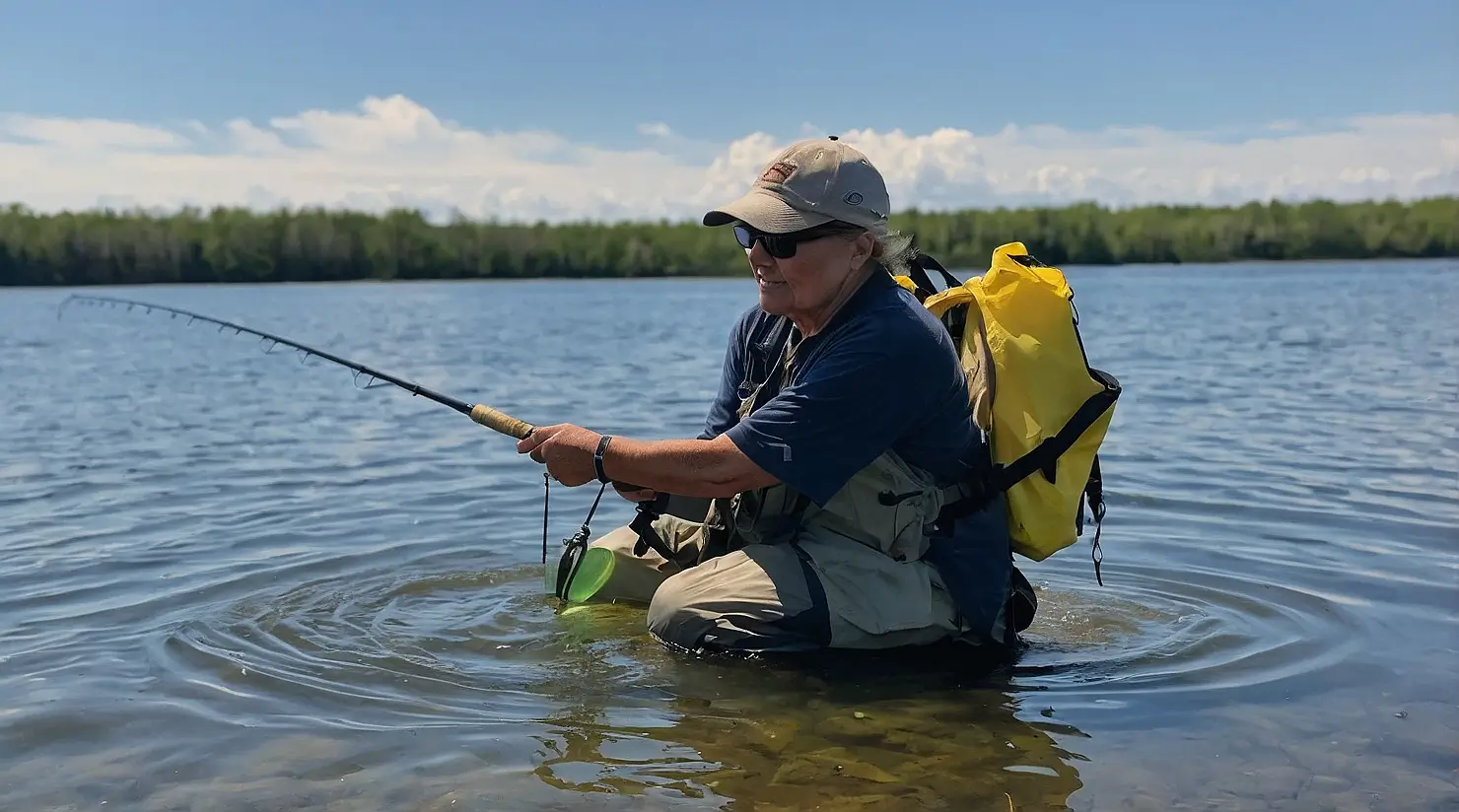
Fishing for Flounder in Canada: Your Ultimate Guide
Did you know that flounder, a member of the flatfish family, are one of the most elusive catches in saltwater fishing, found in the shallows and deep waters with their mesmerizing ability to change color and blend seamlessly with the ocean floor?
Their crafty nature and exceptional camouflage make them a coveted challenge for anglers, offering excellent flounder shore fishing opportunities. If you’re eager to reel in these cunning flatfish, many flounder fishing anglers use you’re in for an exhilarating adventure.
Disclosure: When you purchase a service or a product through our links, we sometimes earn a commission, at no extra cost to you.
Whether you’re a seasoned angler or a novice enthusiast, our comprehensive guide will equip you with the knowledge and skills needed to elevate your flounder fishing game. Get ready to embark on an exciting journey as we unravel the secrets of fishing for flounder.
Key Takeaways about Fishing for Flounder
- Use light tackle and sensitive rods for flounder fishing to detect subtle bites and improve your chances of a successful catch.
- Opt for live bait such as minnows, mullet, or shrimp when targeting flounder, as they are highly effective in attracting these fish.
- Employ a slow and steady retrieve when using lures to mimic the natural movement of prey, increasing the likelihood of enticing flounder to strike.
- Experiment with different fishing rigs like the Carolina rig or flounder rig to find the setup that works best for your fishing location and conditions.
- Focus on fishing during the incoming tide for higher chances of catching flounder, as they are more active and feeding during this time.
- Target areas with sandy or muddy bottoms near structures like docks, bridges, or jetties for prime flounder fishing spots.
Understanding Flounder
Types of Flounder
Flounder, a type of fish, come in different types, including Summer Flounder (Fluke), Winter Flounder, and Southern Flounder.
Each type has distinct features and habitats. Summer Flounder, also known as Fluke, are commonly found fish along the Atlantic coast from Massachusetts to Florida.
Winter Flounder, on the other hand, are typically found in the Northwest Atlantic Ocean, fish.
Southern Flounder, as the name suggests, are predominantly found in the southern coastal waters of the United States, and are a type of fish.
The Summer Flounder (Fluke) prefer sandy or muddy bottoms in shallow coastal waters, while Winter Flounder are usually found in deeper waters with sand, mud, or gravel bottoms.
In contrast, Southern Flounder, a type of fish, thrive in a variety of habitats including estuaries, bays, and coastal waters. The Carolinas are particularly known for being home to all three types of flounders, fish due to their diverse coastal environments.
Disclosure: When you purchase a service or a product through our links, we sometimes earn a commission, at no extra cost to you.
| Types of Flounder | Habitat | Location |
|---|---|---|
| Summer Flounder (Fluke) | Sandy or muddy bottoms in shallow coastal waters | Along the Atlantic coast from Massachusetts to Florida |
| Winter Flounder | Deeper waters with sand, mud, or gravel bottoms | Northwest Atlantic Ocean |
| Southern Flounder | Estuaries, bays, and coastal waters | Southern coastal waters of the United States |
Flounder Habitats
Flounders are ambush predators that often hide in areas with good structure such as rocks, reefs, and shipwrecks. They blend seamlessly with their surroundings due to their flat shape and coloration, making them difficult to spot fish. They can be found near structures such as docks, piers, and jetties where they wait for unsuspecting fish prey to swim by.
Ideal fishing spots for catching flounders include shallow coastal areas with sandy or muddy bottoms. These areas provide ample food sources for flounders and serve as prime locations for anglers seeking to catch these elusive flatfish. Estuaries and tidal creeks are popular spots for flounder fishing due to the abundance of small baitfish and crustaceans that attract flounders seeking their next meal.
Fly to Your Canadian Fishing Paradise
Book cheap flights to Canada's best fishing spots!
One search, all flights
Find the best deals to your favorite fishing spots
Kiwi.com Guarantee
Travel worry-free with our protection
Trusted by millions
Join anglers booking cheap flights with ease
Disclosure: When you purchase a service or a product through our links, we sometimes earn a commission, at no extra cost to you.
Gear and Tackle Essentials
Choosing the Right Rod
When selecting a rod for Flounder fishing, opt for a medium action rod. This type of rod offers the ideal balance between flexibility and strength, allowing you to detect subtle bites while still having the power to reel in larger Flounders. The medium action also enables you to set the hook effectively without risking break-offs.
Moreover, a rod length of around 6.5 to 7.5 feet is recommended. This length provides better control over the bait and enhances casting accuracy, especially in areas with obstacles or strong currents.
It’s essential to consider that different fishing conditions require specific rod characteristics. For instance, when fishing in shallow waters, a shorter rod may be more suitable for maneuverability, while in deeper waters, a longer rod can help cover more ground.
Reel Selection
A 2,500–4,000 series spinning reel is an excellent choice for Flounder fishing. These reels offer a good balance of line capacity and weight, making them versatile for various fishing environments. The spinning reel’s design allows for easy casting and handling, which is advantageous when targeting Flounders in diverse habitats such as estuaries, bays, and nearshore areas.
The size of the fish reel plays a crucial role in handling Flounder. A reel within this range provides sufficient line capacity to handle the sudden runs and dives of Flounders while maintaining a manageable weight for extended fishing periods.
Line and Leader Tips
For Flounder fishing, it’s advisable to use 10–20 lb braided line due to its durability and low stretch properties. This type of line enhances sensitivity, enabling anglers to detect even the faintest strikes from Flounders. When it comes to leaders, they are essential for preventing break-offs when Flounders dart into underwater structures or attempt to escape by rubbing against rough surfaces.
Matching the strength of the leader with that of the main line is crucial to ensure seamless transfer of energy during the fight with the fish. A well-matched line and leader setup not only prevents premature breakage but also increases the chances of successfully landing Flounders.
- Experiment with different rod lengths and actions to find the best fit for your Flounder fishing style and environment.
- Consider the weight and line capacity of spinning reels to ensure they can handle the demands of Flounder fishing.
- Explore the benefits of using braided line for its durability and sensitivity when targeting Flounders.
- Research the best leader strength to match with your main line for a seamless fishing experience.
- Look into different types of rods and reels specifically designed for Flounder fishing to optimize your gear.
- Learn about the behavior and habitat of Flounders to understand how it may impact your choice of rod, reel, line, and leader.
- Seek advice from experienced anglers or fishing experts on the best rod and reel combinations for Flounder fishing.
- Consider the advantages of using a medium action rod for its balance of flexibility and strength when targeting Flounders.
- Compare different series of spinning reels to find the optimal balance of line capacity and weight for Flounder fishing.
- Experiment with various line and leader combinations to find the most effective setup for landing Flounders.
Bait and Lures
Best Baits for Flounder
Anglers have found live shrimp, mullet, and minnows to be highly effective baits for catching flounder. These baits emit a strong scent that entices the flounder, making them irresistible prey. The scent of these natural baits plays a crucial role in attracting flounder, as these fish rely heavily on their sense of smell to locate prey in murky waters.
Using natural baits offers several benefits over artificial lures. Natural baits provide an authentic scent and appearance, which can significantly increase the chances of enticing flounder. Live baits have natural movements that can attract flounder more effectively compared to artificial lures.
Effective Lures
Soft plastic lures have proven to be highly effective for catching flounder. Their lifelike appearance and texture make them irresistible to flounder, especially when mimicking the movement of their natural prey. These lures bounce along the bottom, imitating the behavior of prey and attracting flounder in the process.
Lures with realistic movements such as bouncing and gliding closely mimic the natural movements of bait fish, making them highly effective in enticing flounder. The ability to replicate the behavior of natural prey is a key advantage of using lures when targeting flounder.
Live Bait vs Artificial
When comparing live bait and artificial lures for catching flounder, anglers often weigh the advantages of each option. Artificial lures offer versatility in different conditions, allowing anglers to adjust their tactics based on factors such as water depth, tide, and weather. They can be used effectively in various environments, including docks, bays, reefs, and jetties.
Live bait, on the other hand, has its own advantages. In scenarios where flounder are particularly selective or when fishing in areas with heavy natural prey populations, live bait can outperform artificial lures. The natural movements and scents emitted by live bait can sometimes be more appealing to flounder than artificial alternatives.
Fishing Techniques
Casting Methods
Accurate casting is crucial for successful Flounder fishing. Precision in casting helps to target specific areas where Flounder are likely to be present.
Techniques like pitching and flipping allow anglers to place their bait precisely, increasing the chances of attracting Flounder. The direction of the cast also plays a vital role, as it determines where the bait will land in relation to the Flounder’s habitat.
Drifting Strategies
Drifting is an effective strategy for covering a larger area when fishing for Flounder. It allows anglers to explore different territories and find the optimal location for catching Flounder. Using drift socks or sea anchors helps control the drift, ensuring that the boat moves at an ideal speed for fishing. Varying depths during drifting is beneficial as it enables anglers to explore different habitats where Flounder may be hiding.
Spot and Stalk
Spotting Flounder before making a move is essential for successful fishing. Observing the water carefully and identifying potential Flounder habitats increases the chances of a successful catch. Stealth and patience are crucial during stalking, as any sudden movement or disturbance can scare away the Flounder. Approaching Flounder quietly and cautiously without spooking them increases the likelihood of a successful catch.
Rigs for Success
Simple Rigs
When fishing for flounder, using simple rigs like Carolina rigs can significantly increase your chances. These basic setups consist of a sliding sinker, a swivel, and a leader with a hook. The simplicity of these rigs makes them easy to use for beginners and effective for experienced anglers.
Carolina rigs are versatile and work well in various environments, including rocky areas, grass flats, and around piers. The sliding sinker allows the bait to move naturally along the bottom, attracting flounder lurking in different terrains. This adaptability makes it a go-to rig for many anglers targeting flatties.
In addition to Carolina rigs, using jigheads is another simple yet effective approach when fishing for flounder. Jigheads paired with soft plastic lures can be cast around rocks, wrecks, and grass flats, mimicking the movements of natural prey. Their straightforward design makes them ideal for beginners looking to increase their chances of gigging a flounder.
Advanced Setups
For more experienced anglers, exploring advanced rig setups such as drop shot rigs can further enhance their flounder fishing experience. Drop shot rigs involve attaching the hook above the weight, allowing the bait to hover just above the seafloor. This technique requires precision and finesse but can yield excellent results in challenging conditions.
Advanced setups like drop shot rigs are particularly advantageous when targeting flounder in areas with dense vegetation or strong currents. The ability to position the bait slightly above the bottom reduces the risk of getting snagged in grass or weeds, increasing the chances of a successful catch.
When venturing into deeper waters or fishing around wrecks and structures, utilizing specialized rigs designed to navigate these environments can significantly improve your success rate. These advanced setups often involve specific weights and hooks tailored to maneuver through obstacles while enticing flounder to strike.
When to Fish
Best Seasons
Flounder fishing is most productive during the spring and fall seasons. During spring, flounders move from deeper waters to shallower areas for spawning, making them more accessible to anglers. In the fall, they migrate back to deeper waters, providing another opportunity for successful fishing. Summer can also be good, especially early in the season when they move into shallow bays and estuaries.
The spring season is characterized by rising water temperatures, which trigger flounders to move closer to shorelines and into bays. As the water warms up, flounders become more active and hungry, making it an ideal time for fishing.
In contrast, fall brings cooling water temperatures, prompting flounders to migrate towards deeper waters. This migration provides excellent opportunities for anglers targeting larger flounders.
Time of Day Factors
Flounder are typically more active during nighttime and early morning, as they are nocturnal feeders. They tend to bury themselves in the sand or mud during the day, becoming less active and harder to catch. Therefore, targeting them during low-light conditions can significantly increase the chances of success.
During the day, flounders are less likely to actively hunt for food, preferring to remain hidden in their sandy or muddy surroundings. As a result, anglers may find it more challenging to entice bites during daylight hours.
However, there are exceptions, such as overcast days or in areas with low visibility where flounders may be more active during the day.
Where to Go
Prime Locations in Canada
Canada offers prime flounder fishing locations, such as the Bay of Fundy and the Northumberland Strait. The unique tidal patterns in these areas create ideal conditions for flounder. The shallow coastal waters of Nova Scotia and New Brunswick are known for their abundant flounder populations.
The Canadian waters provide a rich habitat for flounders due to their cold temperatures and nutrient-rich environment. This creates a thriving ecosystem for various species of flounders, making it an attractive destination for anglers seeking a diverse catch.
Specific regions like the Annapolis River in Nova Scotia and the Miramichi River in New Brunswick are renowned for their abundant flounder populations. These areas offer ample opportunities for anglers to reel in impressive catches, making them must-visit spots for flounder fishing enthusiasts.
Inshore Hotspots
Inshore hotspots such as shallow bays, estuaries, and coastal marshes are popular destinations for flounder fishing. These areas provide advantages such as calmer waters, making it easier for anglers to navigate and fish effectively. The proximity to shore allows anglers to access these hotspots conveniently.
Fishing inshore presents the advantage of targeting flounder close to shore, where they often feed and seek shelter. Specific areas within inshore locations, such as shallow sandbars and oyster beds, are known to attract flounder due to the abundance of prey and suitable habitat conditions.
Creek Fishing Tactics
When fishing for flounder in creeks, specialized tactics come into play. Anglers need to focus on using light tackle with live bait or soft plastic lures to entice flounders in these confined spaces. The challenges of creek fishing include navigating narrow channels and dealing with fluctuating water levels, which require adaptability from anglers.
Creek fishing provides unique opportunities to target flounders in shallow, intricate environments where they often seek refuge and feed. Adapting strategies based on varying creek conditions is essential, whether it involves adjusting bait presentation or modifying retrieval techniques to maximize success.
Beyond Borders
International Destinations
When it comes to international destinations, anglers flock to areas like the Gulf of Mexico and the North Sea. These regions are renowned for their excellent Flounder fishing opportunities. The allure of fishing for Flounder in different countries lies in the diverse habitats and varying environmental conditions that these locations offer. Anglers can experience the thrill of battling different species of Flounder, each adapted to its unique marine environment.
In the Gulf of Mexico, anglers can experience action-packed Flounder fishing in the vast and well-known fishing areas. The battle with Flounder in these waters is a test of skill and patience, as these bottom-dwelling fish are known for their elusive nature. On the other side, the North Sea presents an entirely different experience, where anglers can land impressive Flounder specimens in depths ranging from 30 to 200 feet.
The diversity of Flounder species found in international waters further adds to the appeal of exploring different regions for this type of fishing. Each area offers its own unique set of challenges and rewards, making it an exciting endeavor for passionate anglers.
| International Destinations | Gulf of Mexico | North Sea |
|---|---|---|
| Flounder Fishing | Vast and well-known fishing areas | Impressive specimens in depths ranging from 30 to 200 feet |
| Habitat | Diverse marine environment | Unique marine environment |
| Flounder Species | Different species with varying challenges | Diversity of Flounder species found in international waters |
| Experience | Action-packed and elusive nature of Flounder | Test of skill and patience, with varying depths for fishing |
Coastal vs Inshore
Coastal and inshore Flounder fishing present distinct experiences for anglers. Coastal fishing involves venturing into deeper waters near the coastline, often requiring specialized gear and boats to access these prime fishing spots. The unique challenge of coastal fishing lies in navigating through changing tides and weather conditions while targeting Flounder in their natural habitat.
In contrast, inshore Flounder fishing takes place closer to the shorelines, offering anglers the advantage of targeting these prized fish without venturing too far out to sea. The shallower depths and calmer waters make inshore fishing more accessible to a wider range of anglers, including those new to the sport.
The rewards of coastal fishing include the opportunity to hook larger Flounders that inhabit deeper waters along the coastlines. On the other hand, inshore fishing provides a more relaxed and comfortable experience, ideal for those looking to enjoy a leisurely day on the water while still reeling in impressive catches.
Catching Tips
Finding Flounder
Flounder can be found in various habitats, including sandy bottoms, near rocky areas, and around structures like piers or docks. Observation is crucial; look for their distinct coloration and shape to spot them camouflaged on the seafloor. Understanding their behavior helps track them effectively.
Tracking flounder involves noting their movement patterns during different times of the day. They tend to move from deeper waters to shallower areas during high tide, making it an ideal time for catching them. Observing their response to bait placement can provide valuable insights into their feeding behavior.
Understanding the importance of observation and knowledge of flounder movements is essential for successful catches. By recognizing their preferred habitats and tracking their behavior, anglers can significantly increase their chances of a successful catch.
Flounder Fishing: Tips and Tricks for Catching More Fish
- Flounder can be found in various habitats such as sandy bottoms, rocky areas, and around structures like piers or docks
- Observation is crucial for spotting flounder camouflaged on the seafloor
- Understanding their behavior helps in tracking them effectively
- Note their movement patterns during different times of the day
- They tend to move from deeper waters to shallower areas during high tide
- Observing their response to bait placement provides insights into their feeding behavior
- Understanding their preferred habitats and tracking their behavior increases chances of a successful catch
Close-Range Techniques
Close-range fishing techniques are highly effective for targeting flounder due to their tendency to hide and ambush prey. Fishing at close range allows anglers to precisely drop bait right in front of flounder hiding spots, increasing the chances of a successful hook.
The benefits of close-range fishing for flounder include the ability to place bait accurately within their striking range. This technique requires finesse and accuracy, ensuring that the bait is presented naturally without startling the flounder. Anglers can maximize their chances of a catch by mastering the art of close-range fishing.
Summary
You’ve now got the lowdown on flounder fishing. From understanding their behavior to the essential gear, bait, and techniques, you’re all set to reel in those flatfish. Whether you’re a seasoned angler or just starting, these tips will help you up your flounder game and land some impressive catches.
Now it’s time to put your newfound knowledge to the test. Head out to your favorite fishing spot armed with the right gear and armed with the right gear and insider tips.
Get ready to experience the thrill of hooking a flounder like a pro!
Frequently Asked Questions about Fishing for Flounder
What is the best gear for flounder fishing?
The best gear for flounder fishing includes a medium-light to medium-action spinning rod, a reel with a smooth drag system, and 10-20 lb test monofilament or fluorocarbon line. Use a flounder rig with a sinker and two dropper loops for optimal results.
How should I choose the right bait for flounder?
Opt for live baits such as minnows, mullet, or shrimp when targeting flounder. Artificial baits like soft plastic grubs or swimbaits can also be effective. The key is to use baits that mimic the natural prey of flounder and match the local forage.
What are effective fishing techniques for catching flounder?
Drifting along the bottom with live bait or casting and retrieving artificial lures near structure are effective techniques for catching flounder. Pay attention to the tide and current as these factors can significantly impact the behavior and feeding patterns of flounder.
When is the best time to fish for flounder?
Flounder are most active during the warmer months, typically from late spring to early fall. They are more actively feeding during high tides and in low-light conditions such as dawn and dusk. Plan your fishing trips accordingly to increase your chances of success.
Where are the best locations to catch flounder?
Look for areas with sandy or muddy bottoms near inlets, channels, or estuaries where flounder tend to feed. Structure such as docks, piers, and oyster beds also attract flounder. Researching local fishing reports and speaking with experienced anglers can help pinpoint productive locations.


